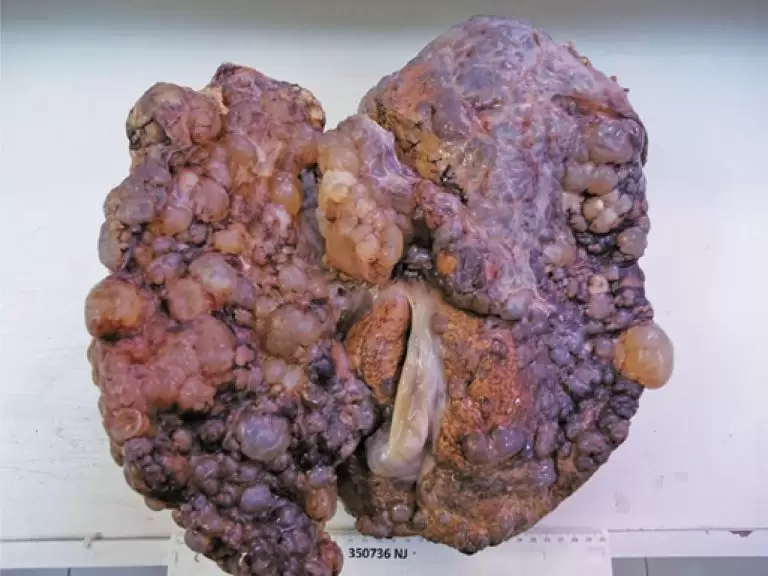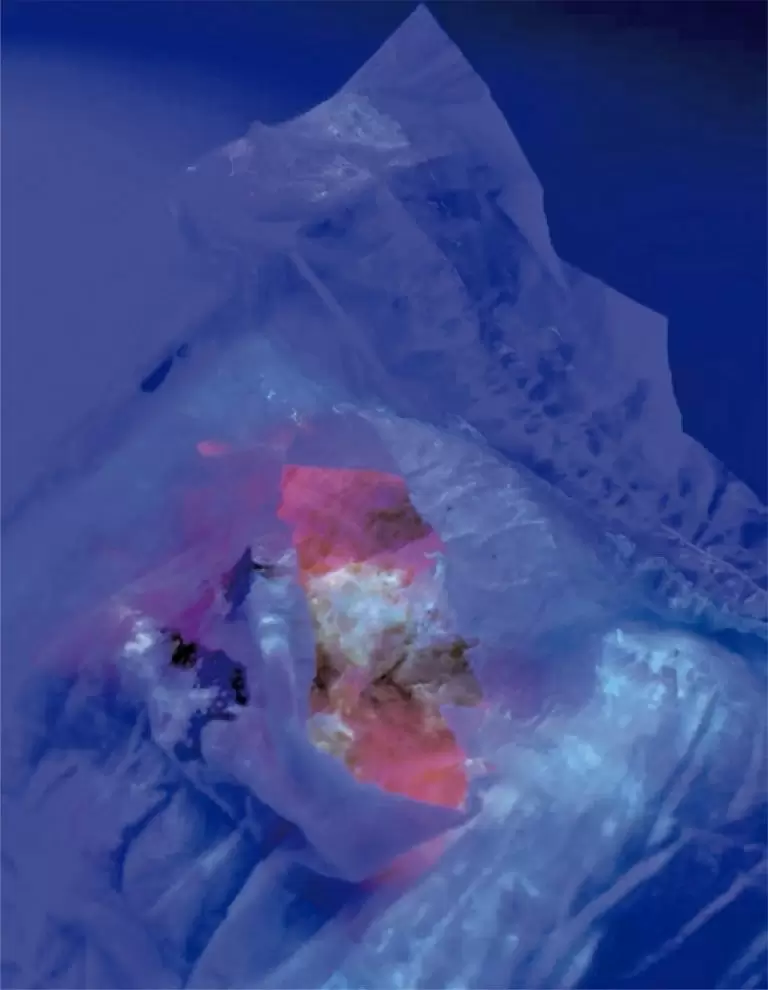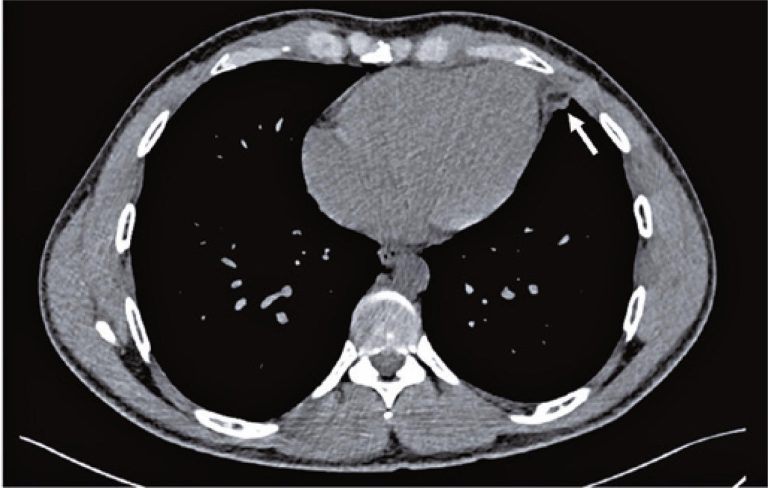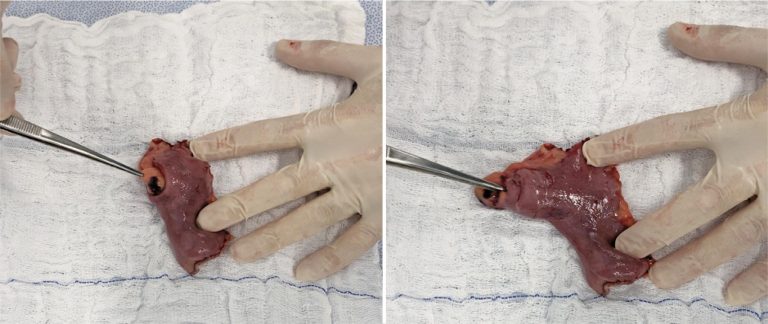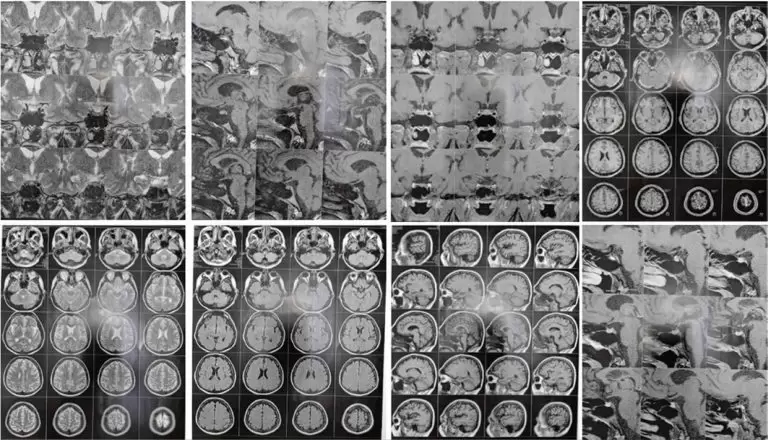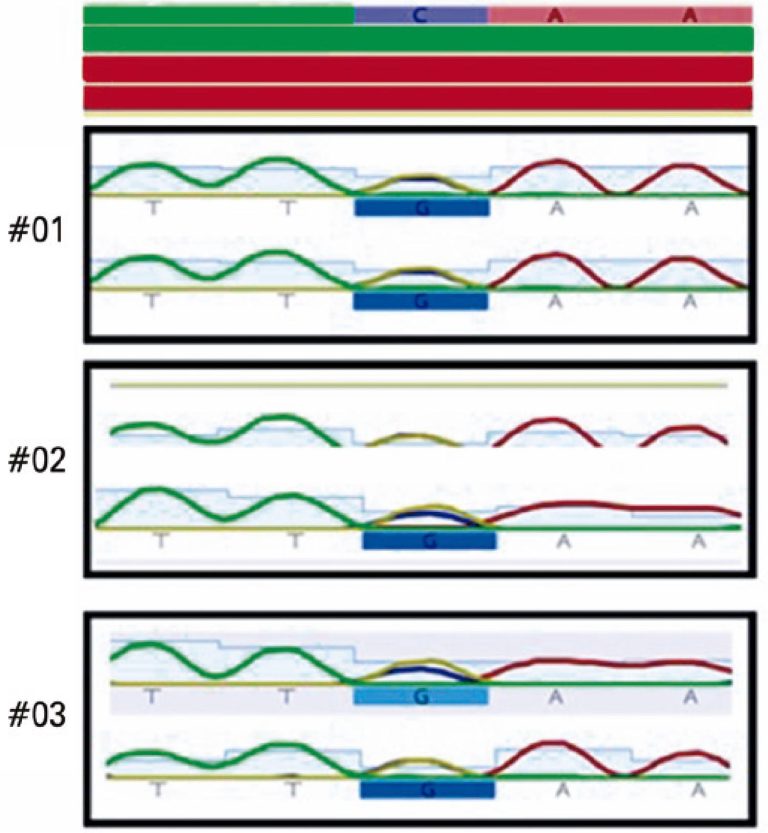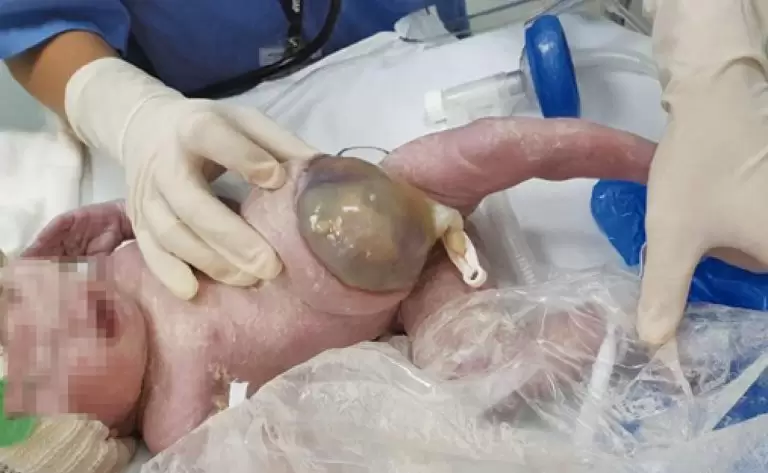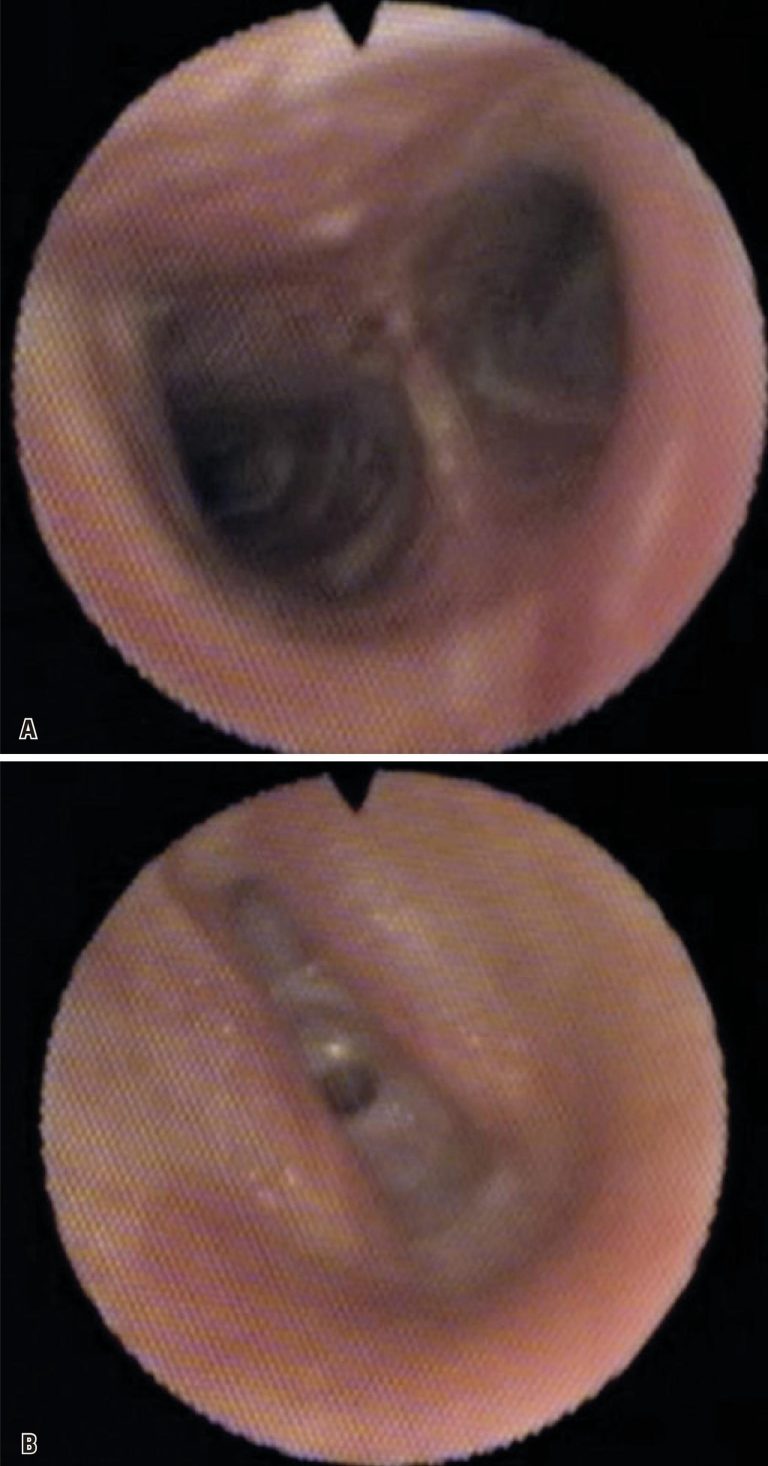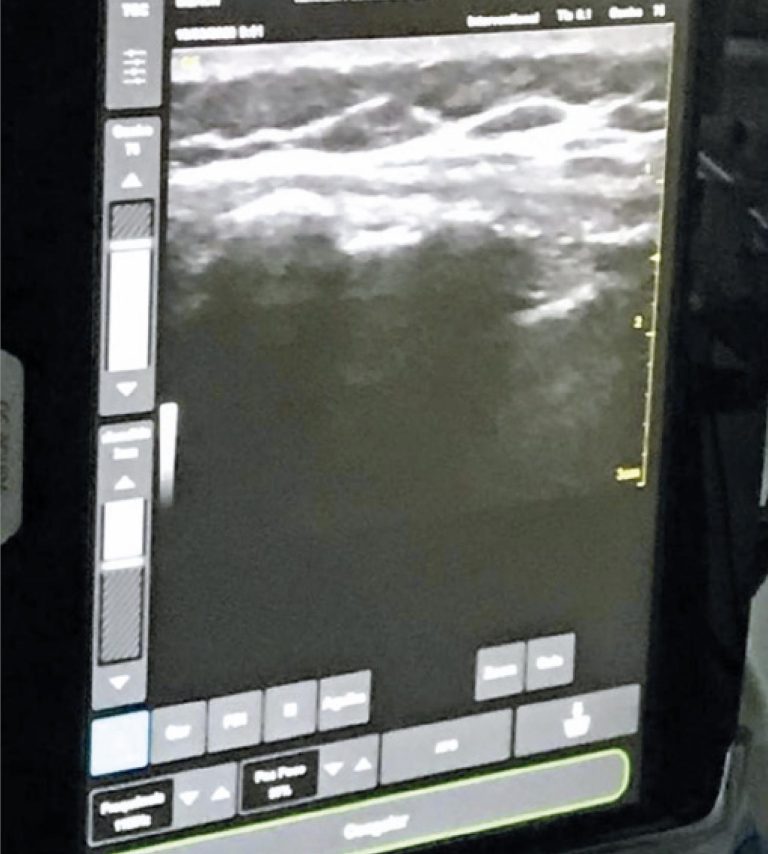23/May/2023
Combined liver-kidney transplant in polycystic diseases: a case report
DOI: 10.31744/einstein_journal/2023RC0282
ABSTRACT Polycystic liver disease, a hereditary pathology, usually manifests as autosomal dominant polycystic kidney disease. The many cysts in the liver cause massive hepatomegaly, majorly affecting the patient’s quality of life. In cases of refractory symptoms, liver transplantation is the only treatment choice. A 43-year-old woman was followed up as a hepatology outpatient in August 2020, with a progressive increase in abdominal volume, lower limb edema, and cachexia. The patient was diagnosed with polycystic renal and liver disease with massive […]
Keywords: Hepatomegaly; Kidney transplantation; Liver diseases; Liver failure; Liver transplantation; Polycystic kidney, autosomal dominant
23/May/2023
Bullous lesions following phototherapy in a newborn
DOI: 10.31744/einstein_journal/2023RC0256
ABSTRACT A male infant presented with progressive jaundice immediately after birth. Fecal acholia and choluria associated with extensive bullous skin lesions in his trunk, abdomen, and upper and lower limbs developed during phototherapy. Several diagnostic hypotheses were presented, including neonatal porphyria, hemochromatosis, Alagille syndrome, and neonatal lupus. A 24-hour urine sample for the dosage of urinary porphyrins was collected, showing high results (1823.6µg in 100mL). At 50 days of life, fluorescence spectroscopy using a Wood’s lamp revealed simultaneous bright red […]
Keywords: Infant, Newborn; Jaundice; Phototherapy; Porphyria, erythropoietic; Porphyrias; Skin diseases, genetic
23/May/2023
Epipericardial fat necrosis as a differential diagnosis of acute chest pain: a case report and algorithm proposal for diagnostic approach
einstein (São Paulo). 23/May/2023;21:eRC0183.
View Article23/May/2023
Epipericardial fat necrosis as a differential diagnosis of acute chest pain: a case report and algorithm proposal for diagnostic approach
DOI: 10.31744/einstein_journal/2023RC0183
ABSTRACT Chest pain is a frequent, potentially life-threatening condition in the emergency department and requires immediate investigation and treatment. This case report highlights a rare differential diagnosis of pleuritic chest pain: epipericardial fat necrosis. A 29-year-old man presented with normal clinical evaluation, electrocardiography, point-of-care ultrasound, and unremarkable laboratory tests. The initial hypothesis was acute pleuritis. Chest radiography revealed peri-cardiac nonspecific findings, and computed tomography revealed epicardial fat necrosis. Despite the rarity of this condition, accurate diagnosis allows for better practices. […]
Keywords: Algorithms; Chest pain; Emergency medicine; Fat necrosis; Pericardium
27/Jan/2023
Intestinal intussusception of Meckel’s diverticulum, a case report and literature review of the last five years
DOI: 10.31744/einstein_journal/2023RC0173
ABSTRACT Meckel’s diverticulum is the most common gastrointestinal tract anomaly. It arises from the incomplete closure of the omphalomesenteric conduit, which is a true diverticulum at the antimesenteric border of the ileum. Although the majority of patients are asymptomatic, they can present with inflammation, hemorrhage, intussusception, intestinal obstruction, and perforation, among others; this constitutes an important differential diagnosis for acute abdomen. A 19-year-old female sought medical attention because of intermittent diffuse abdominal pain for two months, nausea, and diarrhea. In […]
Keywords: Diverticulum; Ileal diseases; Intestine, small; Intussusception; Laparoscopy; Meckel diverticulum
27/Jan/2023
Idiopathic partial central diabetes insipidus
DOI: 10.31744/einstein_journal/2023RC0124
ABSTRACT Diabetes insipidus is a rare disorder characterized by the inability to concentrate urine, which results in hypotonic urine and increased urinary volume. It may occur because of antidiuretic hormone deficiency or resistance to its action in the renal tubules. When there is a deficiency in the synthesis of antidiuretic hormones, diabetes insipidus is called central; when there is resistance to its action in the renal tubules, it is said to be nephrogenic. We report a case of idiopathic partial […]
Keywords: Deamino arginine vasopressin; Diabetes insipidus; Hypernatremia; Polyuria; Water
13/Oct/2022
Brazilian family with hyperferritinemia-cataract syndrome: case report
DOI: 10.31744/einstein_journal/2022RC0076
ABSTRACT Hereditary hyperferritinemia-cataract syndrome is a rare autosomal dominant disease caused by a genetic mutation in the iron responsive element in the 5’ untranslated region of the ferritin light chain gene. Hereditary hyperferritinemia-cataract syndrome is characterized by elevated serum ferritin levels and bilateral cataract development early in life and may be misdiagnosed as hemochromatosis. This case report describes a Brazilian family with a clinical diagnosis of hereditary hyperferritinemia-cataract syndrome, which was submitted to ferritin light chain gene sequencing. The genetic […]
Keywords: Cataract; Ferritins; Hyperferritinemia; Iron metabolism disorders; Iron overload; Mutation
19/Sep/2022
Omphalocele and biliary atresia: chance or causality. A case report
DOI: 10.31744/einstein_journal/2022RC0072
ABSTRACT To relate omphalocele and biliary atresia and investigate possible embryological correlations that justify the simultaneous occurrence. A female preterm newborn diagnosed as omphalocele; cesarean delivery, weight 2,500g, 46 XX karyotype. Initially, the newborn remained fasting and on parenteral nutrition, and enteral diet was introduced later, with good acceptance. On the 12th day of life, the newborn presented direct hyperbilirubinemia, increased levels of liver enzymes and fecal acholia, with a presumptive diagnosis of biliary atresia. However, the ultrasound was inconclusive, […]
Keywords: Biliary atresia; Congenital abnormalities; Hernia, umbilical; Infant, Newborn; Jaundice
05/Sep/2022
Gain-of-function STAT1 mutation and visceral leishmaniasis
DOI: 10.31744/einstein_journal/2022RC0048
ABSTRACT Gain-of-function mutations in the STAT1 gene have been initially associated with chronic mucocutaneous candidiasis. However, further research has shown that STAT1 GOF variants may increase susceptibility to infection by other intracellular pathogens. This report describes the first case of disseminated leishmaniasis associated with a STAT1 GOF mutation in a pediatric patient who did not have chronic mucocutaneous candidiasis. The patient was a four-year-old boy presenting with fever, severe asthenia, hepatosplenomegaly, pancytopenia, and liver failure. Bone marrow aspirate revealed hemophagocytosis […]
Keywords: Germ-line mutation; Leishmaniasis, visceral; Lymphohistiocytosis, hemophagocytic; Sequence analysis, DNA; STAT1 transcription factor
24/Aug/2022
Supraglottic stenosis as a late complication of radiotherapy: a case report
DOI: 10.31744/einstein_journal/2022RC0035
ABSTRACT Nasopharyngeal carcinoma is rare and affect mainly men between the fourth and sixth decades of life. The clinic is characterized to be nonspecific and the main complaints or findings related to this disease are: cervical mass, aural dysfunction, and headache. The basis of treatment is radiotherapy that involves a wide field of irradiation of normal tissues, which usually generates sequelae with direct implications for quality of life. We report a case of a nasopharyngeal carcinoma treated with radiotherapy and […]
Keywords: Laryngostenosis; Nasopharyngeal carcinoma; Radiotherapy
15/Aug/2022
Pregnant patient with prune belly syndrome: case report
DOI: 10.31744/einstein_journal/2022RC6903
ABSTRACT Prune belly syndrome is a rare congenital disease of unknown etiology that is present in one in every 40 thousand live births, and predominantly affects males, at a ratio of 4:1. In males, it presents with anomalies in the urinary system, absence of abdominal muscles, bilateral cryptorchidism, and infertility. In women, the syndrome has variable presentations, but fertility is preserved. Searching the medical literature, we found only one case of prune belly syndrome in pregnant women. Therefore, the patient […]
Keywords: Pregnancy, high-risk; Prune belly syndrome


